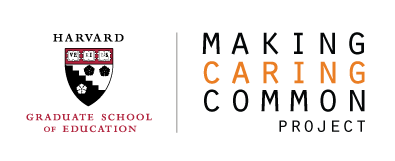How To Help Kids Develop Empathy
Empathy enables us to understand and care about the feelings and perspectives of others. But while it’s often easy to care for people who look or think like us, it can be harder to understand and care for people who are different from us in terms of culture, ethnicity, race, gender, ability, religion, political affiliation, or other characteristics. But if we can learn about and value our differences and find things in common in the process, we can really get to know, come to appreciate, and care about one another. Empathy can also help kids when they become adults bridge differences in their communities and the world at large.
Below are four key steps for adults to help kids appreciate differences and find things in common with people:
1. Look out for differences around you
Whether via TV or film, books, podcasts, museums, cultural events, or new places, look for opportunities for meaningful engagement with people and communities who look, act, or speak differently than you do. Encourage your child to be honest (but respectful and genuine) about what they’re experiencing, to ask questions, and to be curious about finding information you both don’t know about.
Extra resources for exploring differences:
Brightly offers diverse book roundups for ages baby through teenager.
Common Sense Media features recommendations for diverse TV shows and movies.
Circle Round is a children’s podcast featuring stories from all over the world.
MuseumsUSA lists museums by state; you can also browse by topic, like culture or history.
2. Look for things in common
Encourage kids to look for things they have in common with other people (fictional or not) by using “just like me” language. For example, your child might have a tough time getting to know some kids in the neighborhood, but come to find that one of them likes to play basketball “just like me." To find similarities, help kids practice asking other kids good questions, like “If you could spend a day with a celebrity or anyone in the world, who would it be?”
Get to know you questions for kids
3. Be aware of your biases
Try to notice how you respond to or talk about different people and the kinds of unspoken messages kids might pick up. We all have biases and it’s important we confront them, especially since we are our kids’ main role models.
Extra Resources for Confronting Biases:
Learning For Justice describes ways to reflect upon our biases, including the ways in which our own biases influence what we teach (and don’t teach) our children about valuing difference.
Ongig shares examples of biased language and what to say instead.
Project Implicit offers a number of exercises to assess your conscious and unconscious biases from a list of possible topics, like race, weight, and religion.
4. Make it a habit
Try to be intentional about noticing differences and finding similarities with different people. Work conversations about these into regular activities, like mealtimes or weekend outings. You can use simple questions like, “Did you learn something new about someone today?” or “What do you have in common with [think of someone your child might struggle to understand]”?
Quick questions to encourage kids to appreciate differences and find similarities in people
Additional Information
The Science Behind These Recommendations
Empathy is a topic that has been researched extensively. Here are key resources we consulted - in addition to experts and parents - that are behind the recommendations shared on this page:
Batson, C., & Ahmad, N. (2009). Using empathy to improve intergroup attitudes and relations. Social Issues and Policy Review, 3(1), 141-177. [Abstract]
Leary, M. R., Tipsord, J. M., & Tate, E. B. (2008). Allo-inclusive identity: Incorporating the social and natural worlds into one's sense of self. In H. A. Wayment & J. J. Bauer (Eds.), Transcending self-interest: Psychological explorations of the quiet ego (pp. 137–147). American Psychological Association. [Abstract]
Levine, M., Prosser, A., Evans, D., & Reicher, S. (2005). Identity and emergency intervention: How social group membership and inclusiveness of group boundaries shape helping behavior. Personality and Social Psychology Bulletin, 31(4), 443-453. [Abstract]







